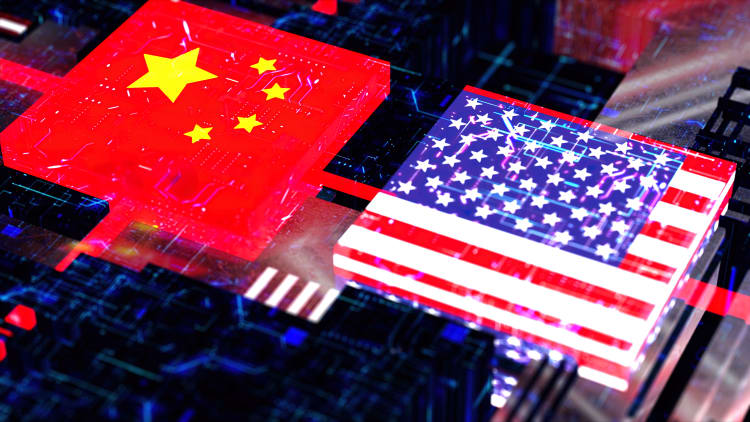Arjun Kharpal

Chinese regulators on Thursday said it finalized first-of-its-kind rules governing generative artificial intelligence as it looks to ramp up oversight of the rapidly-growing technology.
The powerful Cyberspace Administration of China (CAC) said it worked with several other regulators to come up with the new regulation that will come into effect on Aug. 15.
Generative AI is a fast-growing area of technology in which artificial intelligence services are able to generate content such as text or images.
Chinese regulators on Thursday finalized first-of-its-kind rules governing generative artificial intelligence as the country looks to ramp up oversight of the rapidly growing technology.
The powerful Cyberspace Administration of China (CAC) said it worked with several other regulators to come up with the new regulation that will come into effect on Aug. 15.
Generative AI is a fast-growing area of technology in which artificial intelligence services are able to generate content such as text or images. ChatGPT, developed by U.S. firm OpenAI, is the most well-known example and allows users to prompt the chatbot and receive replies to queries.

Can China’s ChatGPT clones give it an edge over the U.S. in an A.I. arms race?
These services are trained on vast amounts of data. However, ChatGPT’s success has sparked a wave of rival services to pop up, raising concern among global regulators about the potential risks around the technology.
Chinese technology giants have jumped on the bandwagon, announcing plans and launching their own generative AI services.
But China, which tightly controls the domestic internet via censorship and regulation, is watching AI development closely. Chinese regulators are concerned about the potential for these services to generate content which may go against Beijing’s views or ideology.
That’s partly why Chinese tech firms have been circumspect about launching their ChatGPT-like services. Rather than full services that are widely available to the public, Chinese companies have focused their technology on enterprise and narrow uses.
For example, Alibaba this month launched an artificial intelligence tool that can generate images from prompts called Tongyi Wanxiang, but it is only available for enterprise customers for beta testing.
However, the rules from the CAC provide technology giants a framework to work with when it comes to the technology.
What are China’s generative A.I. rules?
The rules will only apply to generative AI services that are available to the general public rather than those being developed in research institutions, for example.
Generative AI services will need to obtain a license to operate, the CAC said.
If a generative AI service provider finds “illegal” content, it should take measures to stop generating that content, improve the algorithm and then report that material to the relevant authority.
Providers of these services must conduct security assessments on their product and ensure user information is secure.
Generative AI services in China must also adhere to the “core values of socialism,” the CAC said.
Still, regulators are trying to strike the balance between making China a leader in artificial intelligence while keeping a close eye on its development.
The CAC’s rules said the regulation aims to encourage innovative applications of generative AI and support the development of related infrastructure like semiconductors.
No comments:
Post a Comment